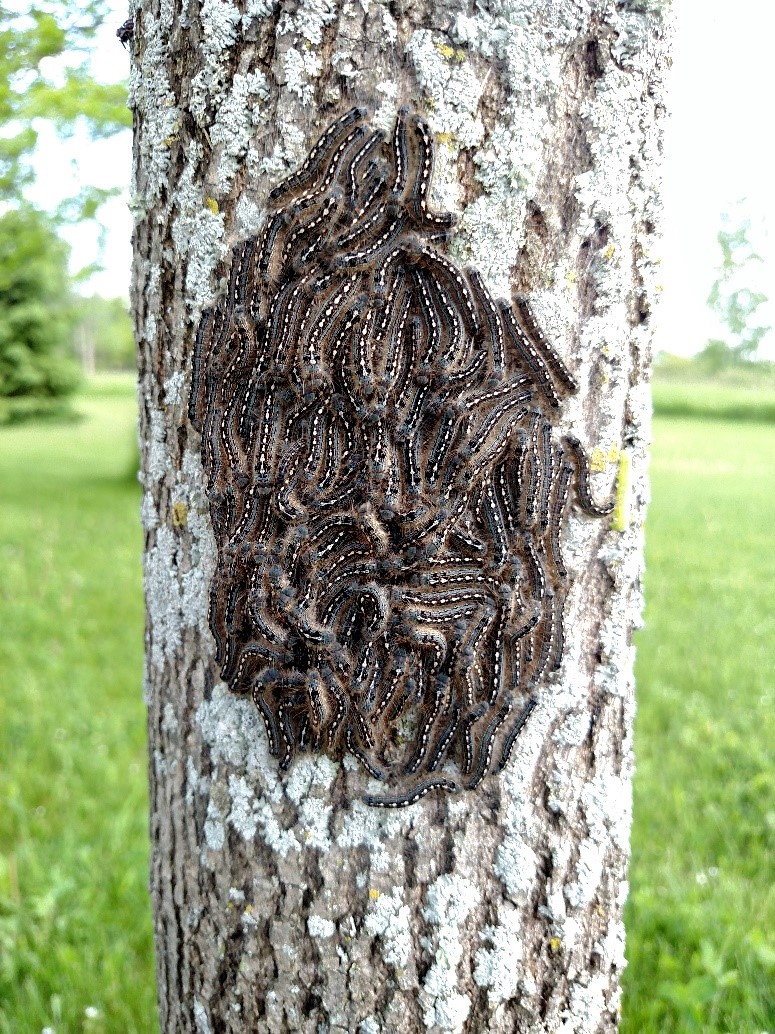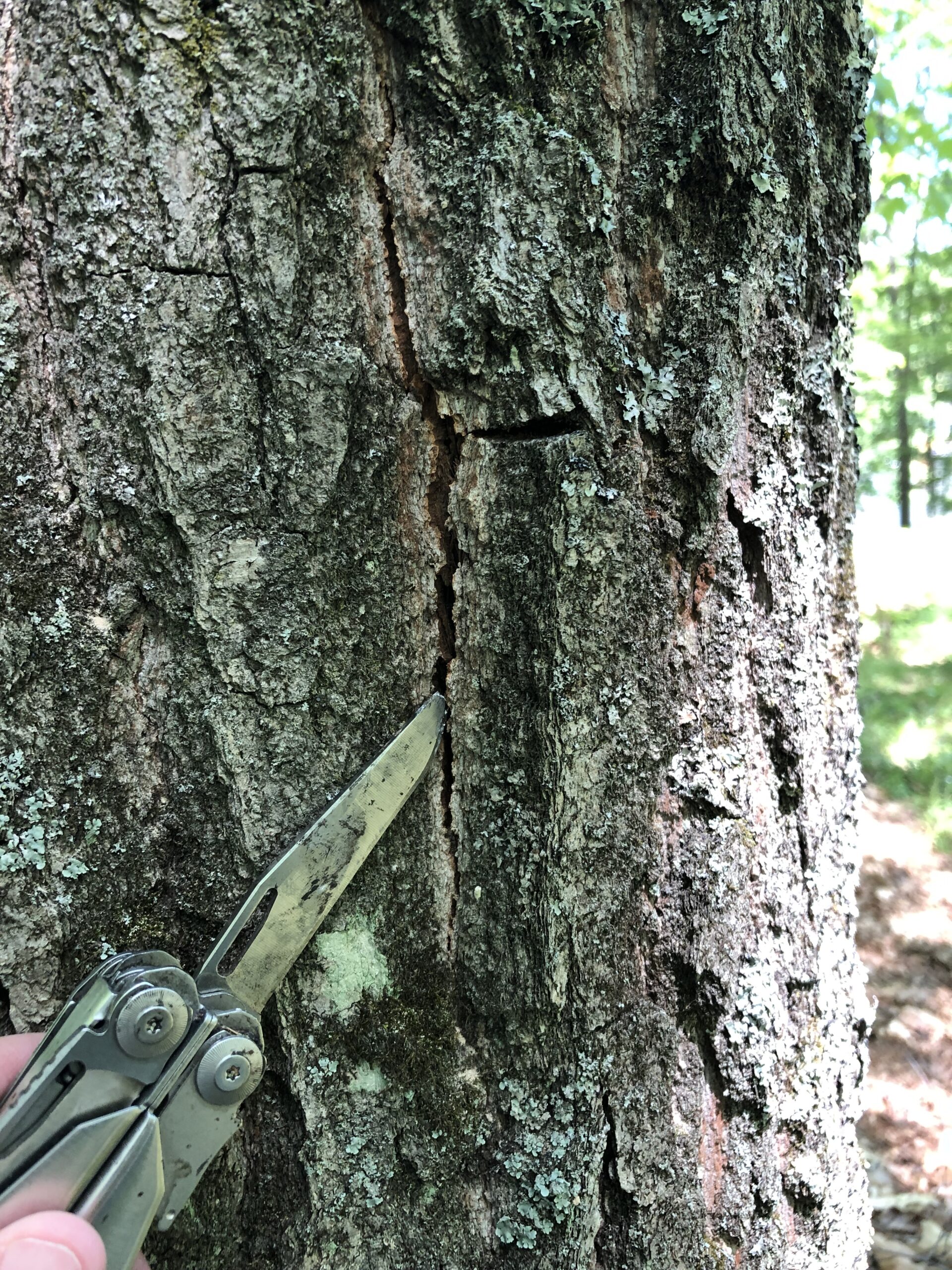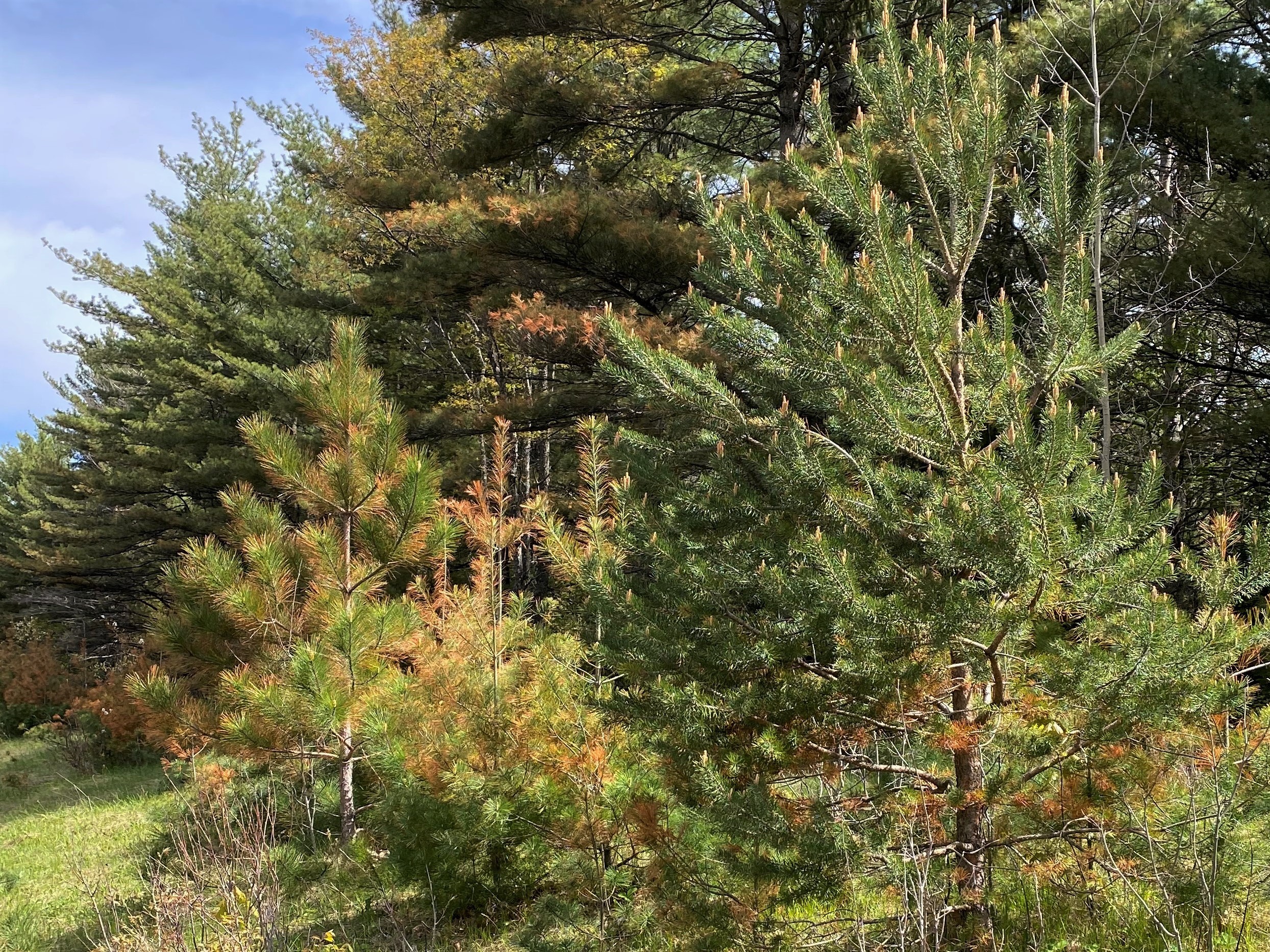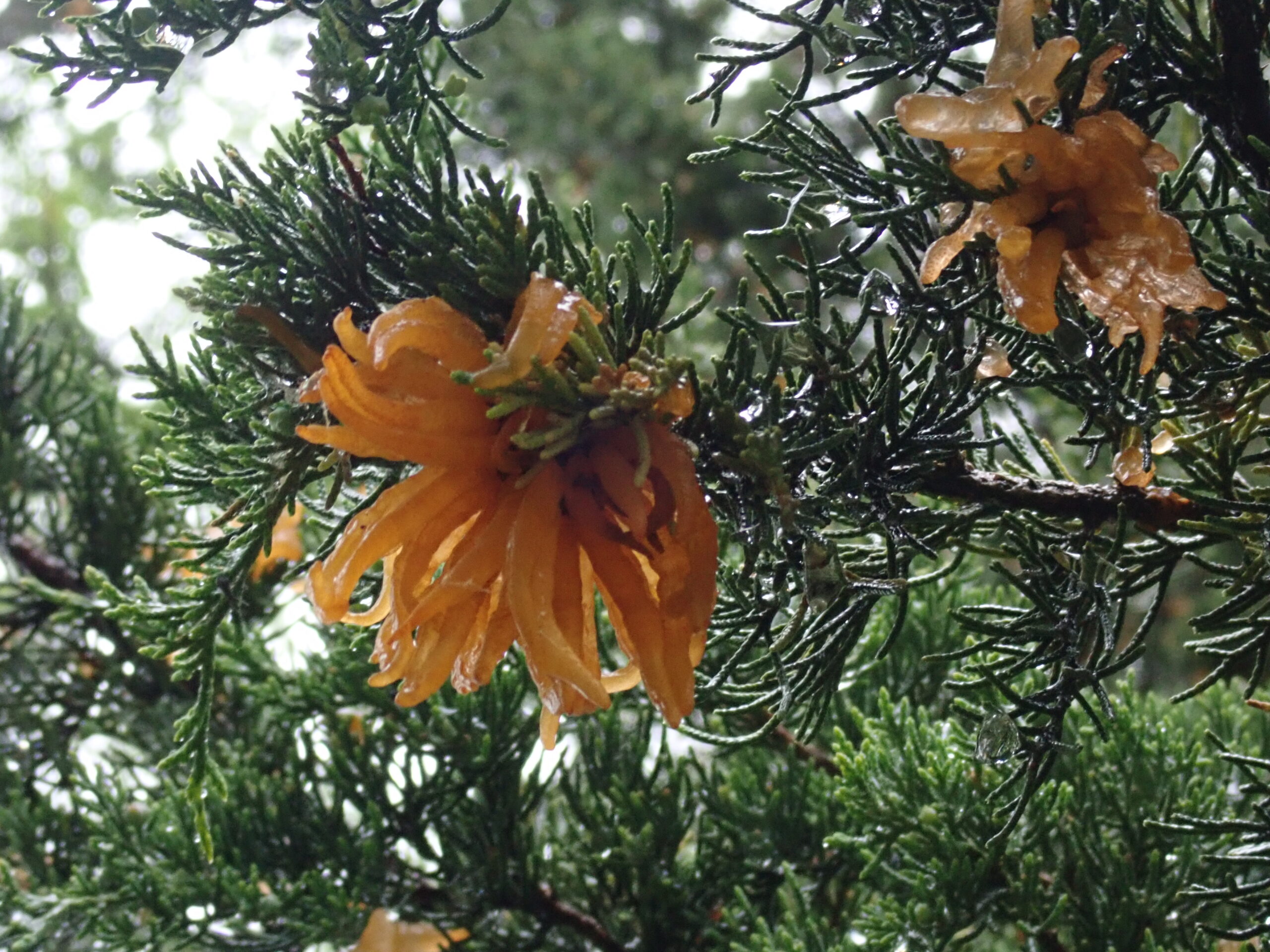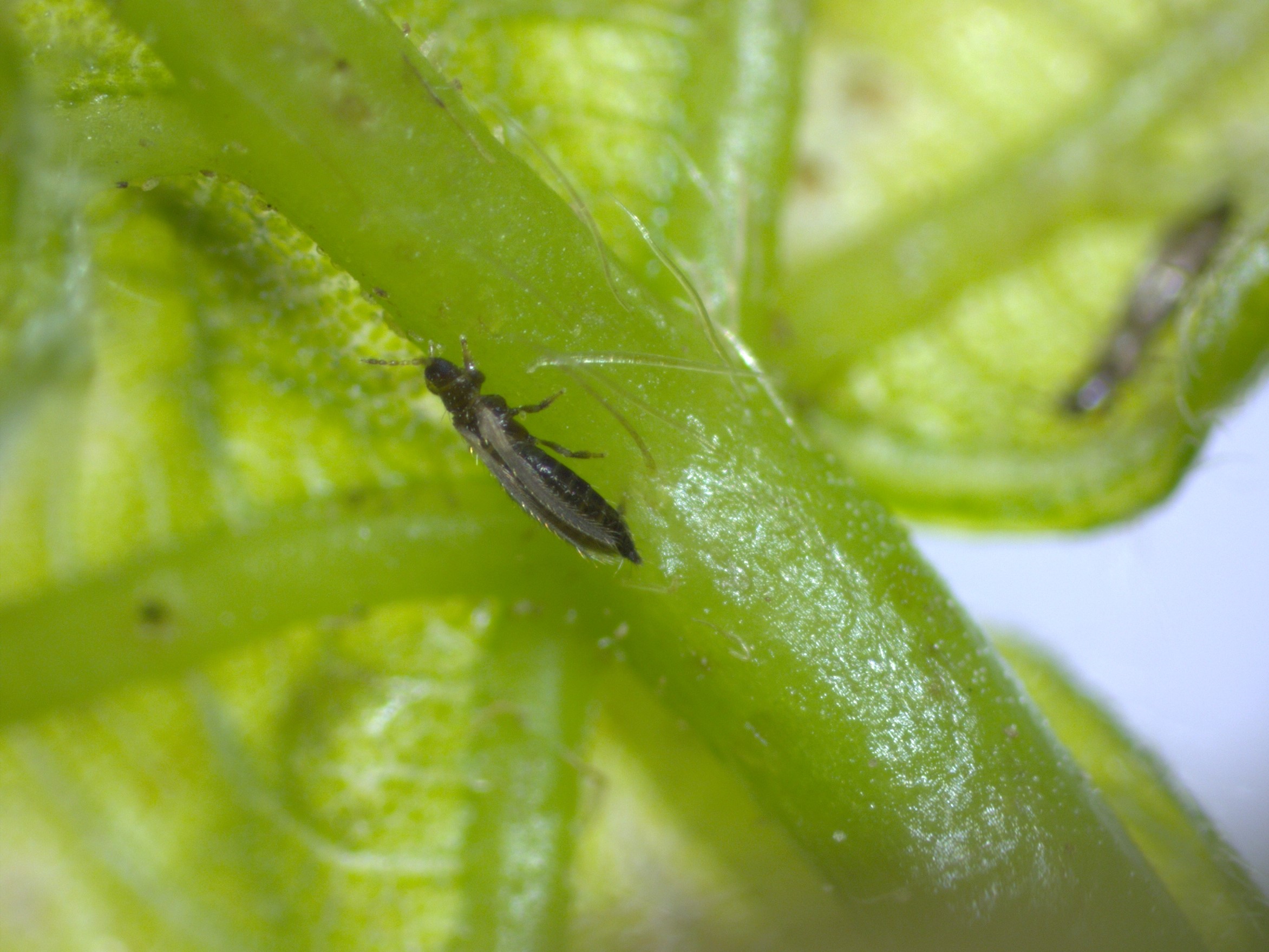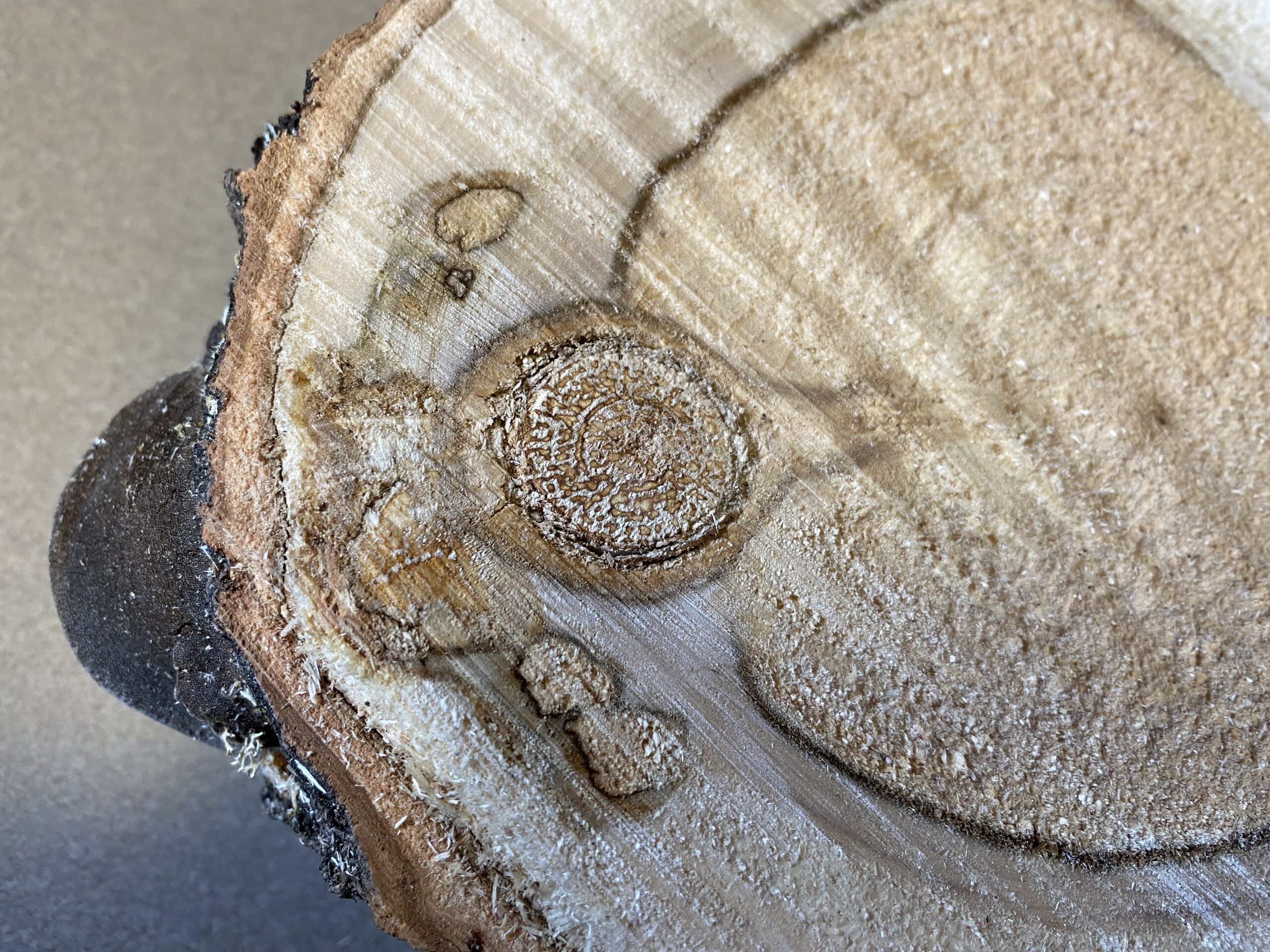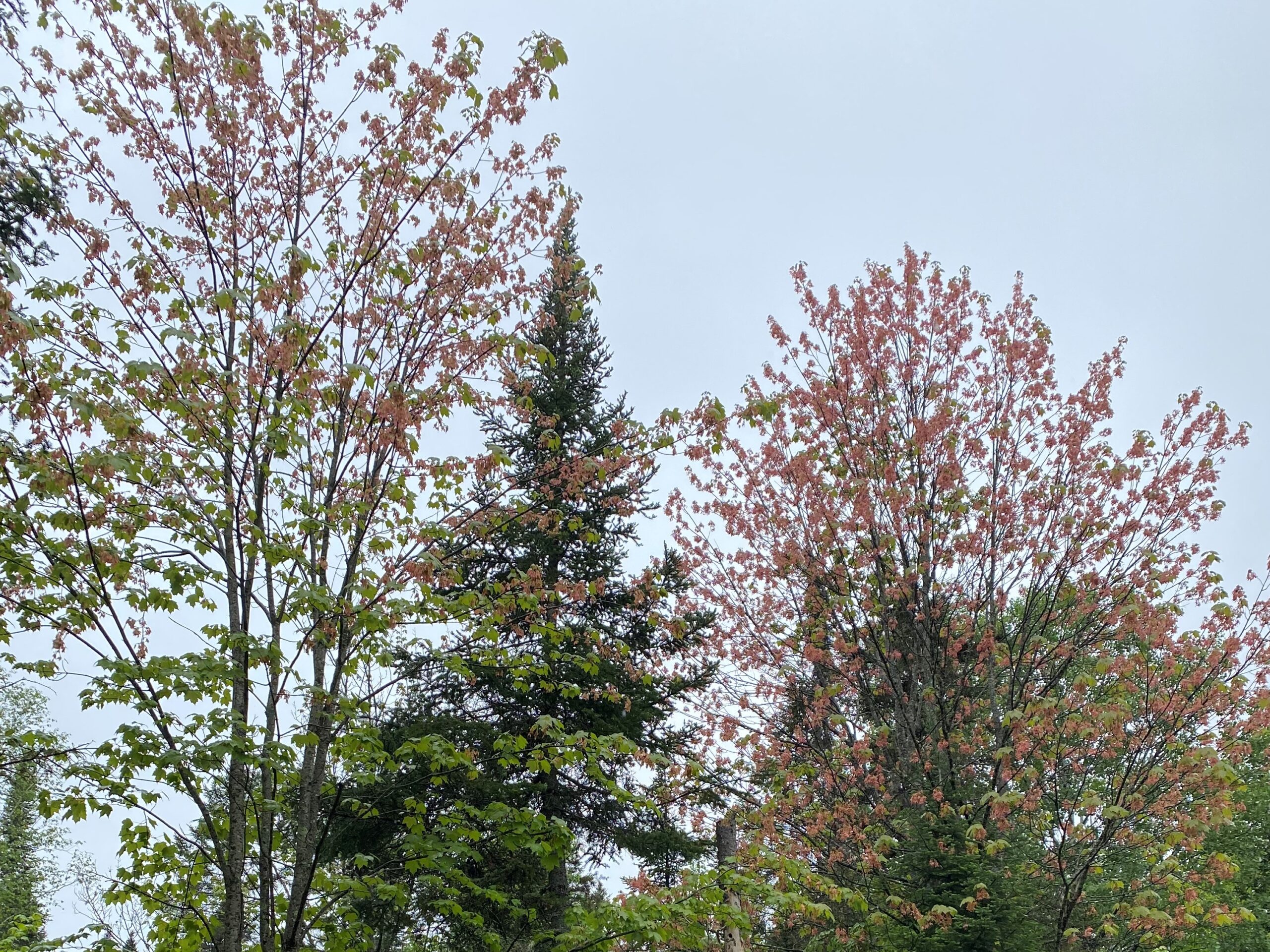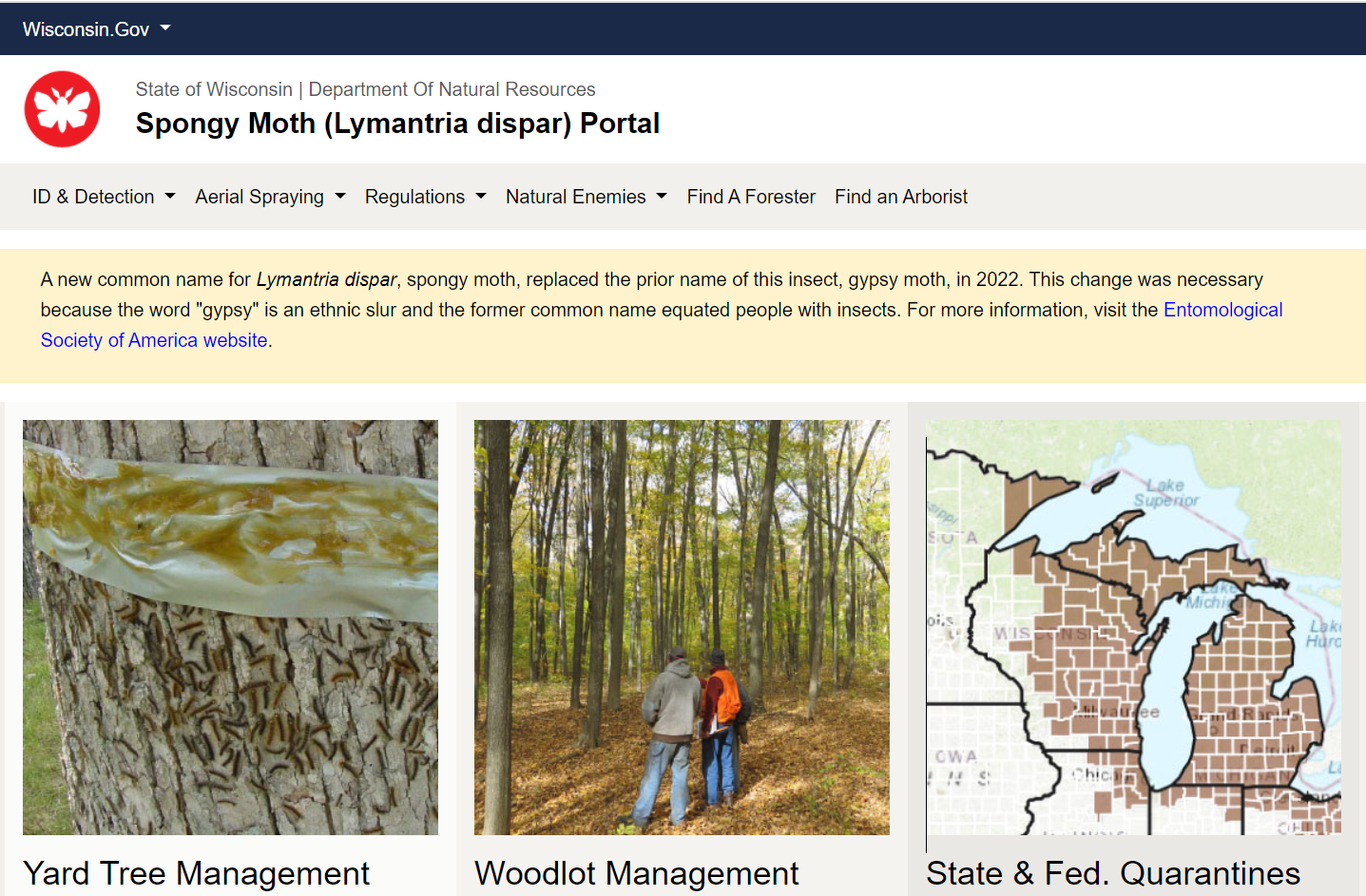By Linda Williams, DNR Forest Health Specialist, Woodruff, Linda.Williams@wisconsin.gov, 920-360-0665 & Paul Cigan, DNR Forest Health Specialist, Hayward, Paul.Cigan@wisconsin.gov, 715-416-4920
Emerald ash borer (EAB) has been detected for the first time in Forest County in the Town of Armstrong Creek and Ashland County in the City of Ashland. The Forest County detection was most likely a natural expansion of other infestations in Florence and Marinette counties.
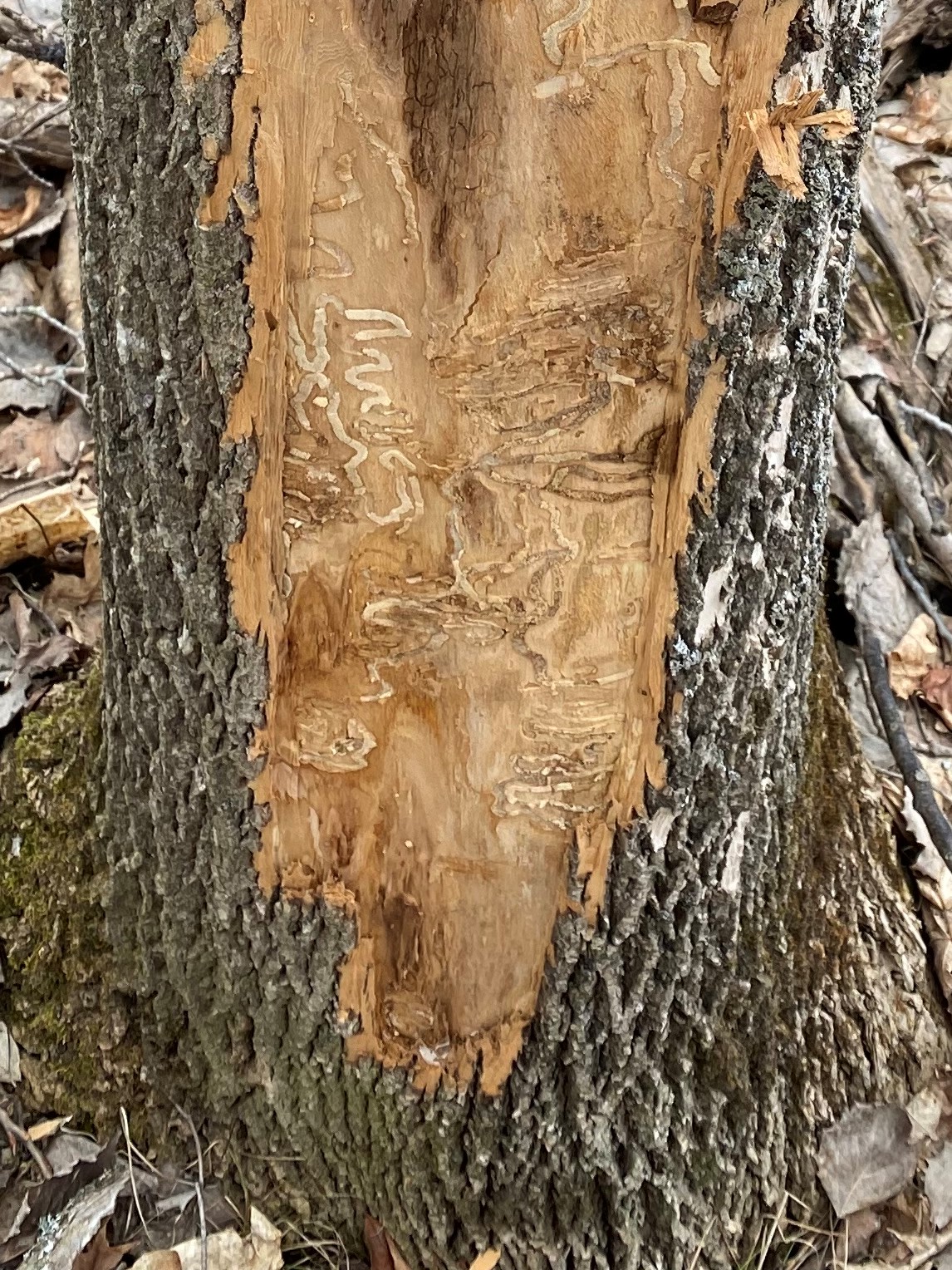
This Forest County tree was infested with EAB top to bottom. Photo: Wisconsin DNR
The Ashland County detections appear to be isolated infestations likely spread through the transportation of firewood or logs. Several large green ash stands in the City of Ashland show advanced infestation signs.
EAB was first found in Wisconsin in 2008. There are now just seven counties where EAB has not yet been identified. EAB was federally deregulated as of January 2021. In 2018, Wisconsin instituted a state-wide quarantine. This discovery in Forest and Ashland counties will result in no regulatory changes.
Please visit the interactive Wisconsin EAB detections map to see where EAB has been reported. Follow the map’s instructions if you know of an infested area not on the map. Continue reading “EAB Identified For The First Time In Forest And Ashland County” →

